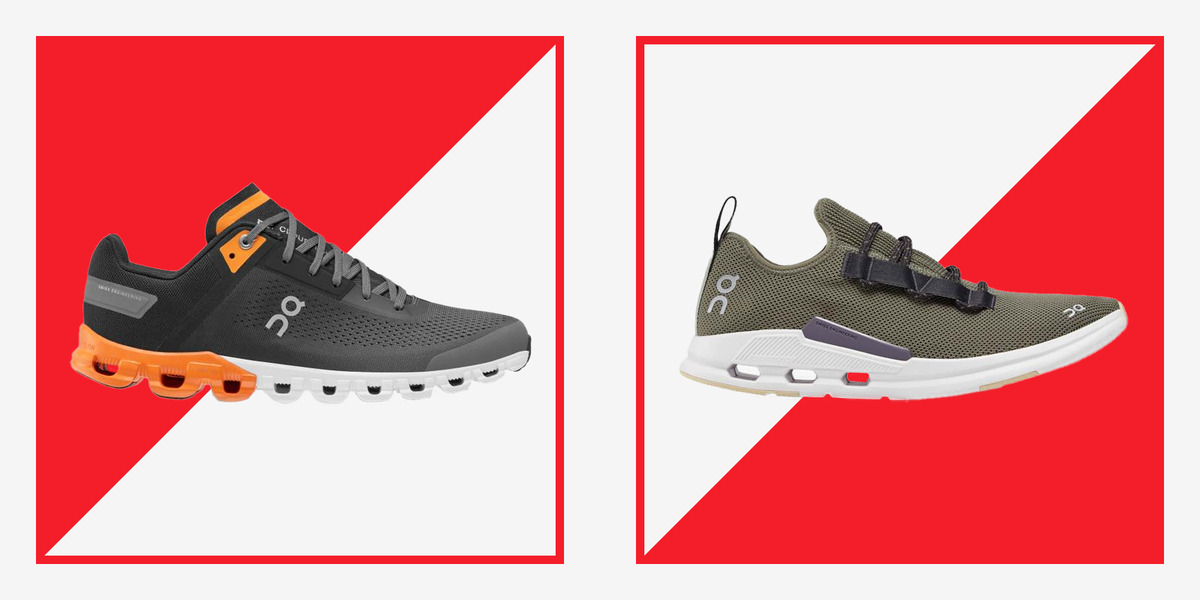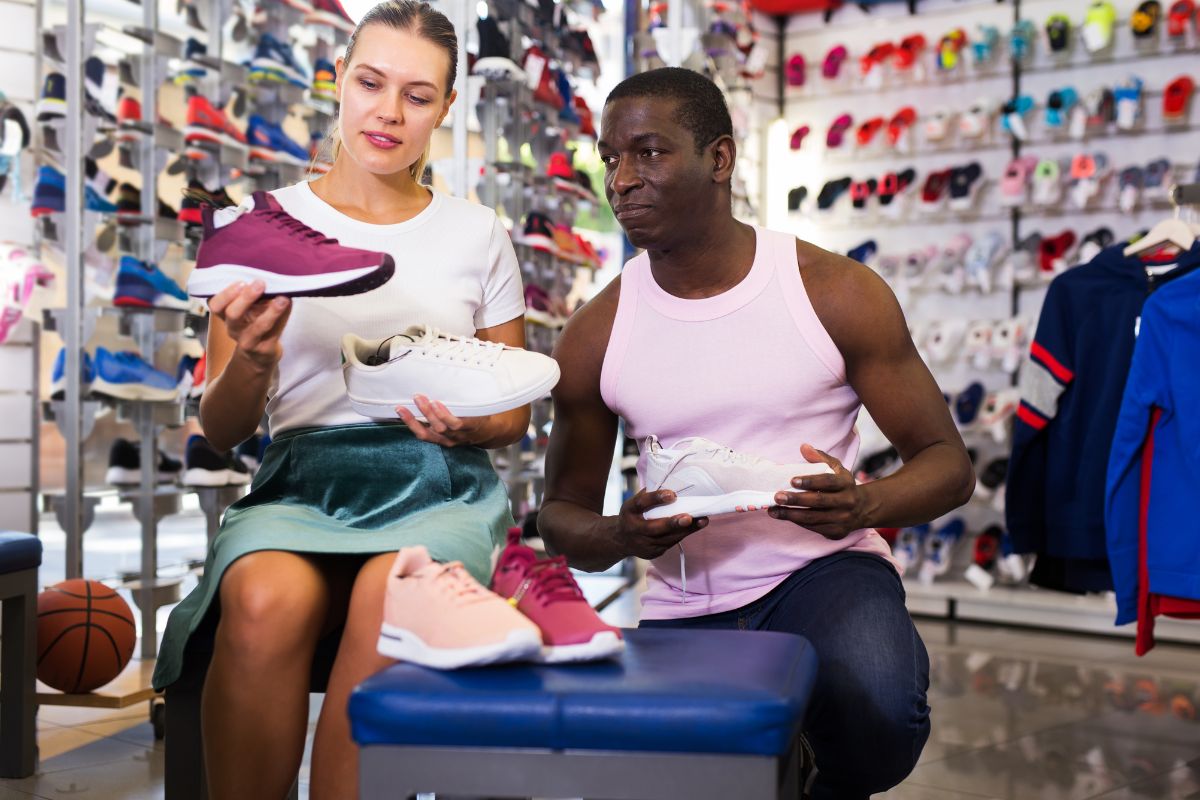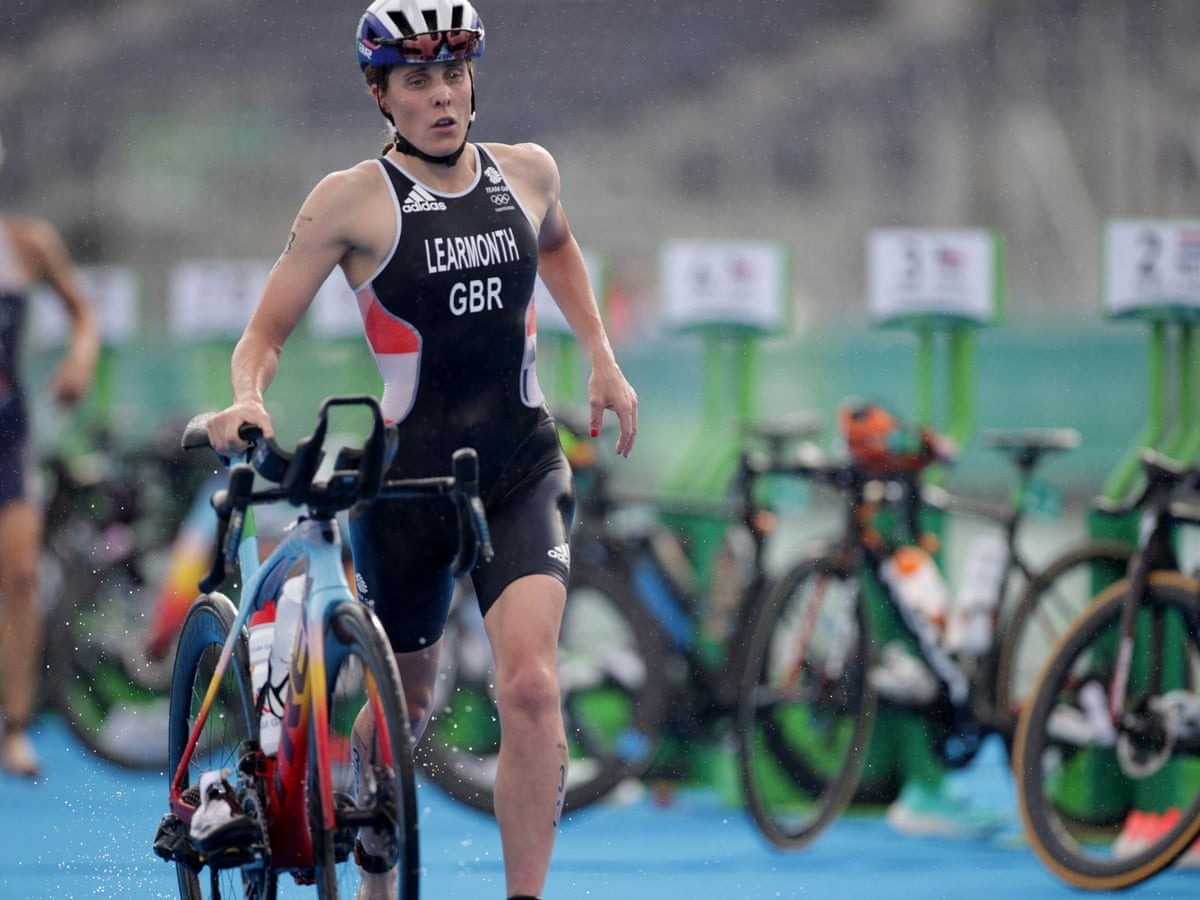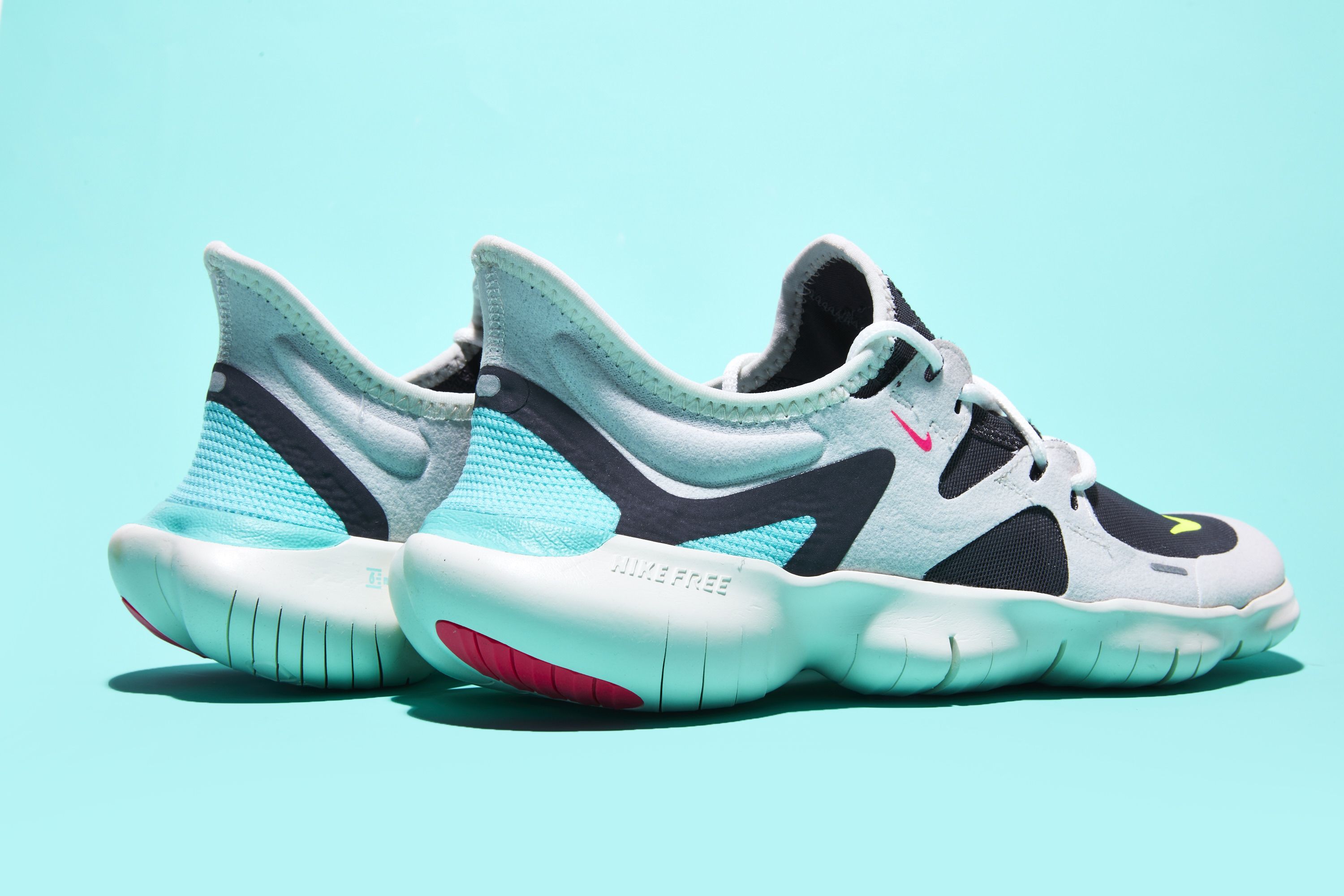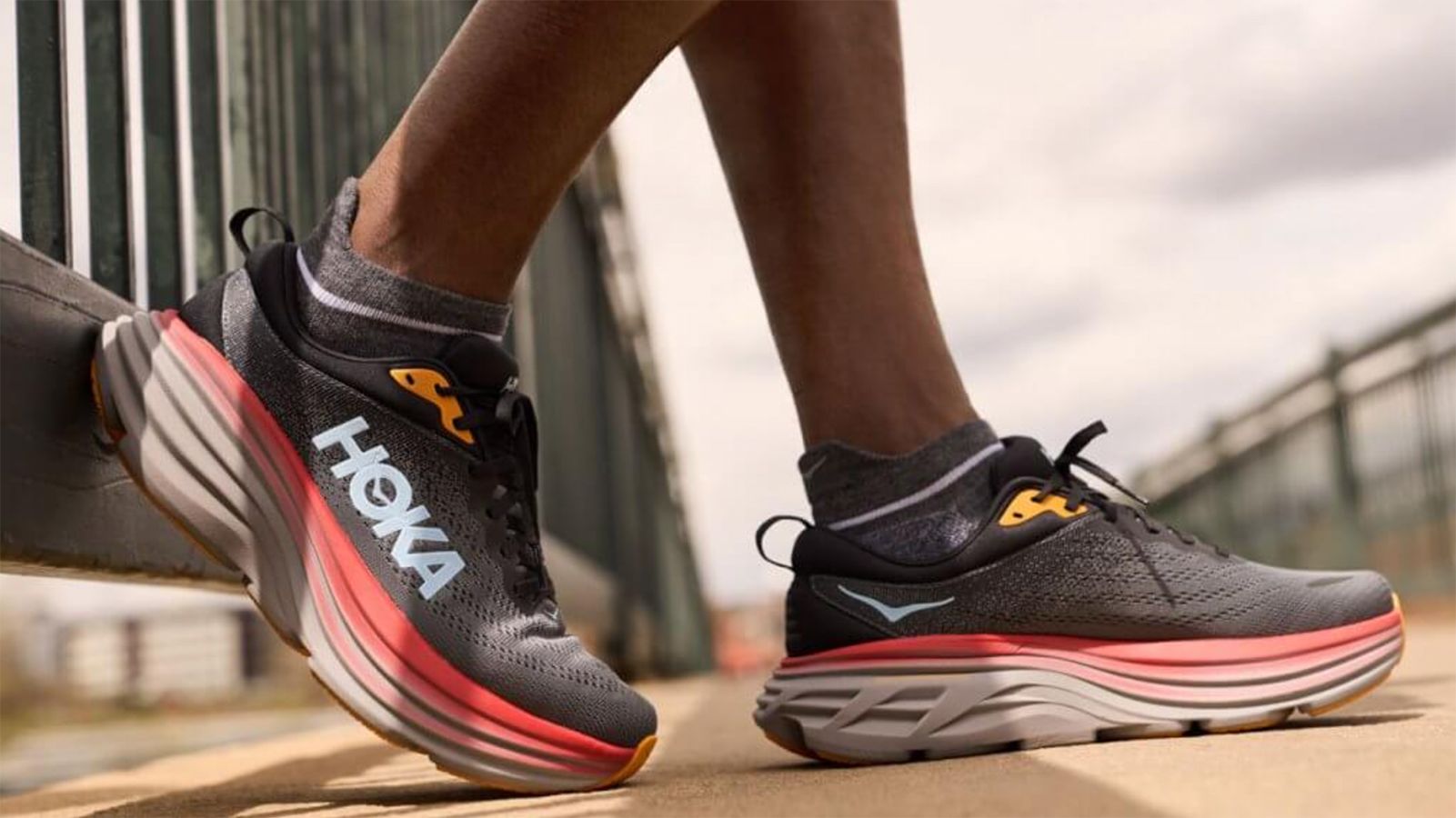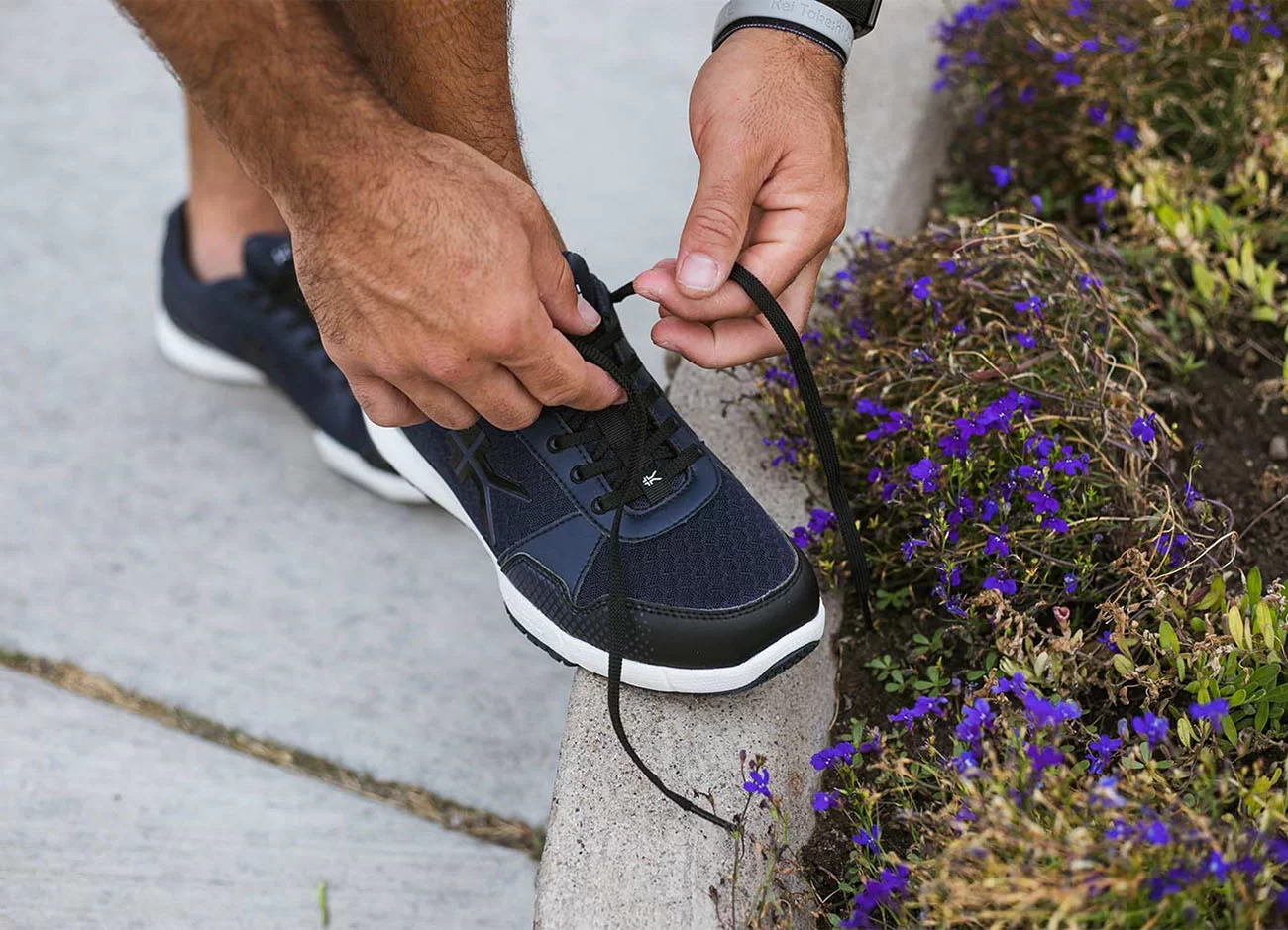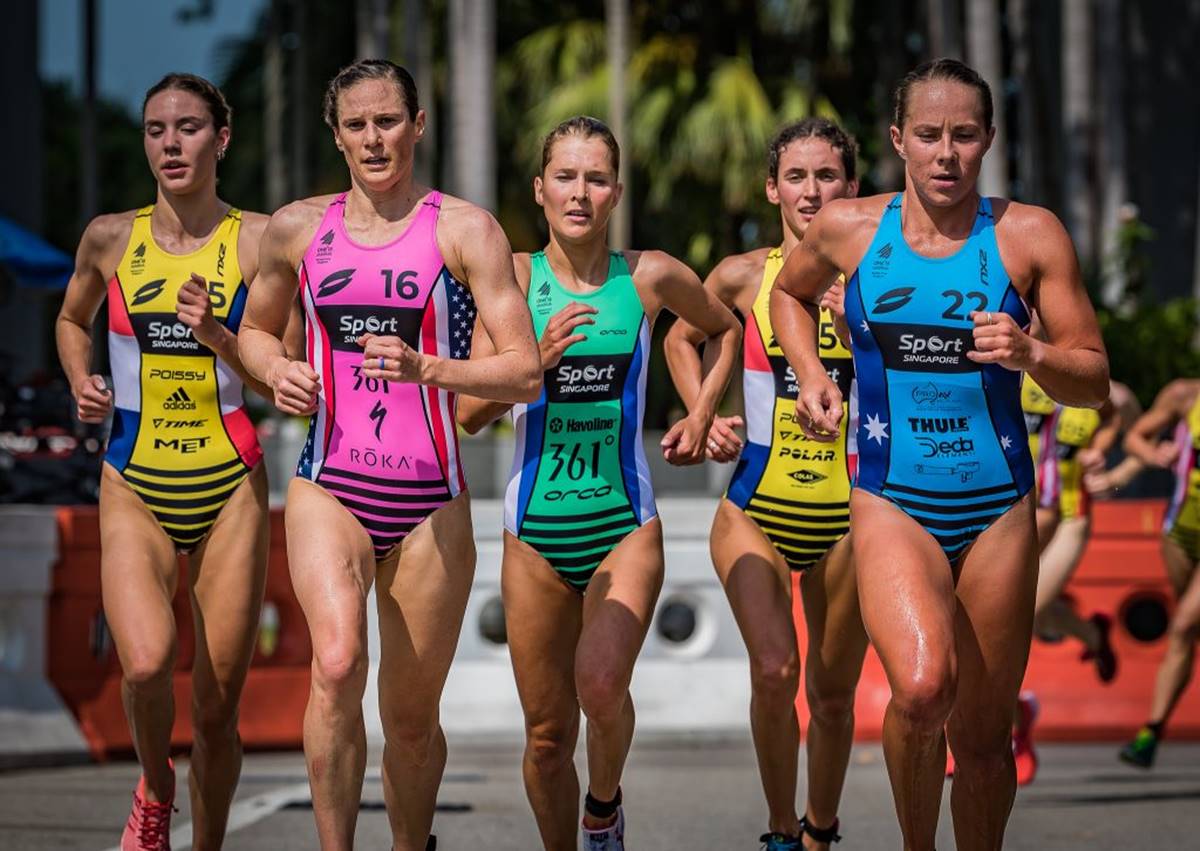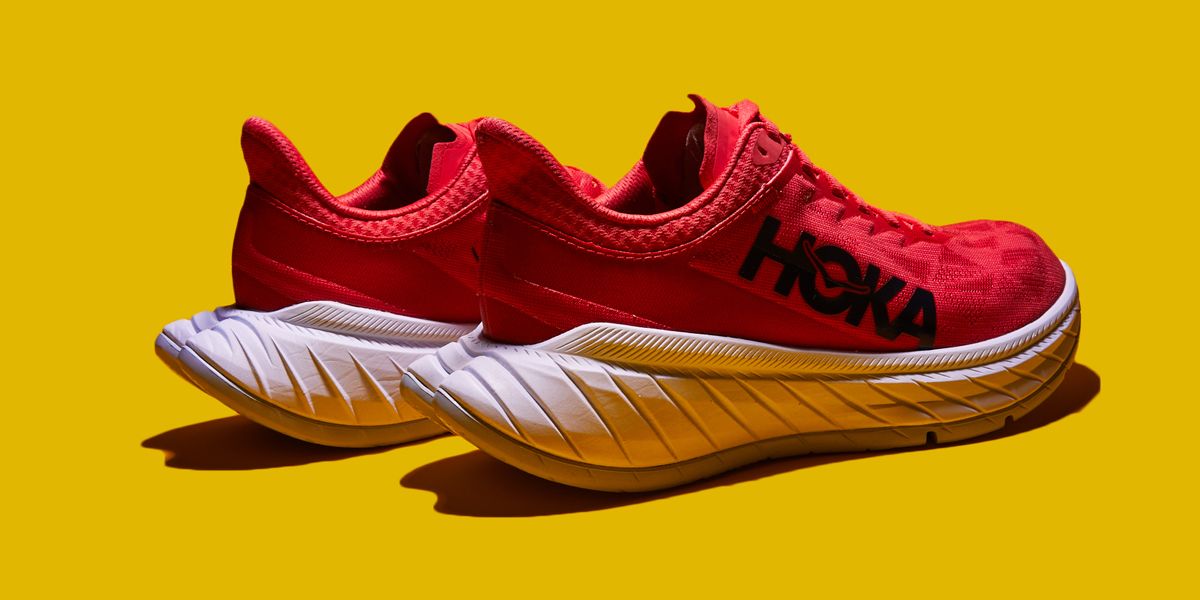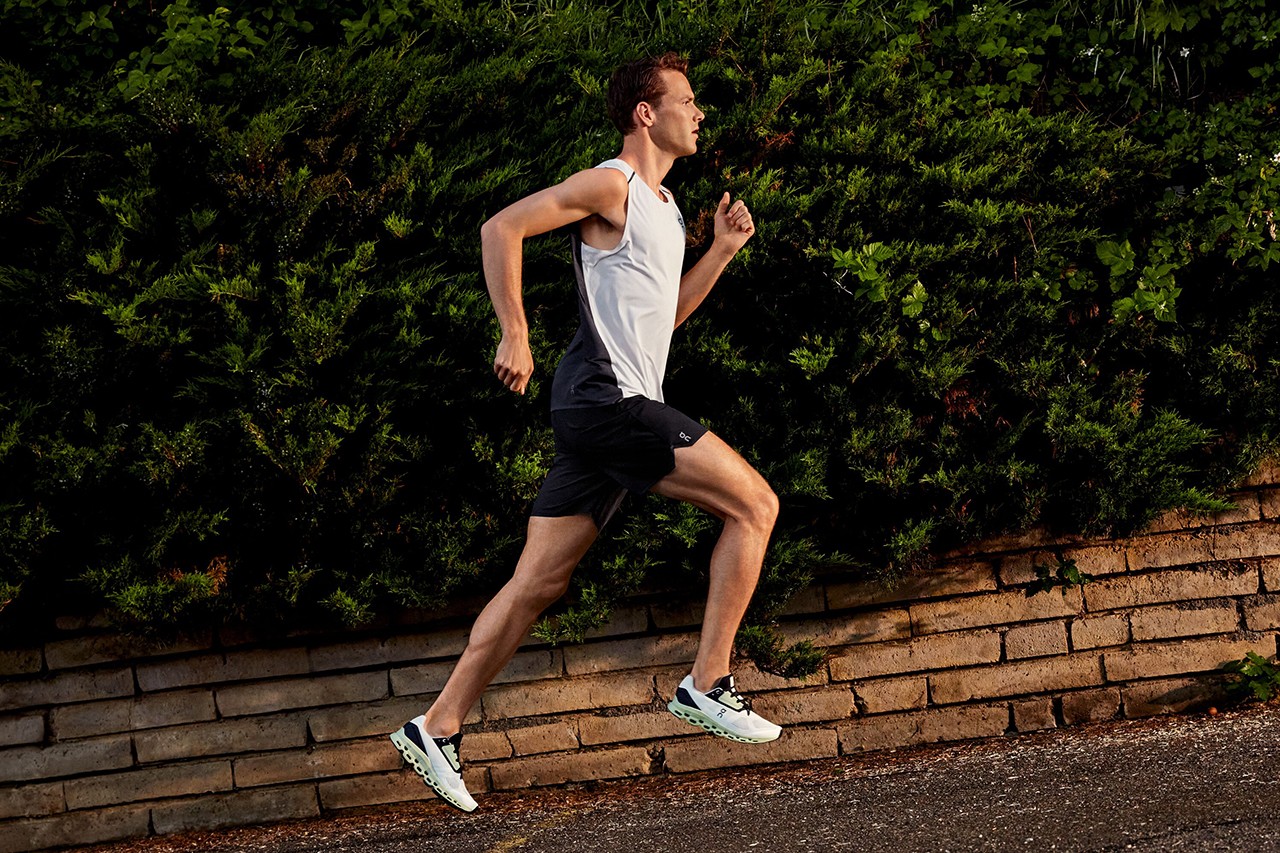Home>Misc>Featured>How To Buy Running Shoes In San Francisco, CA
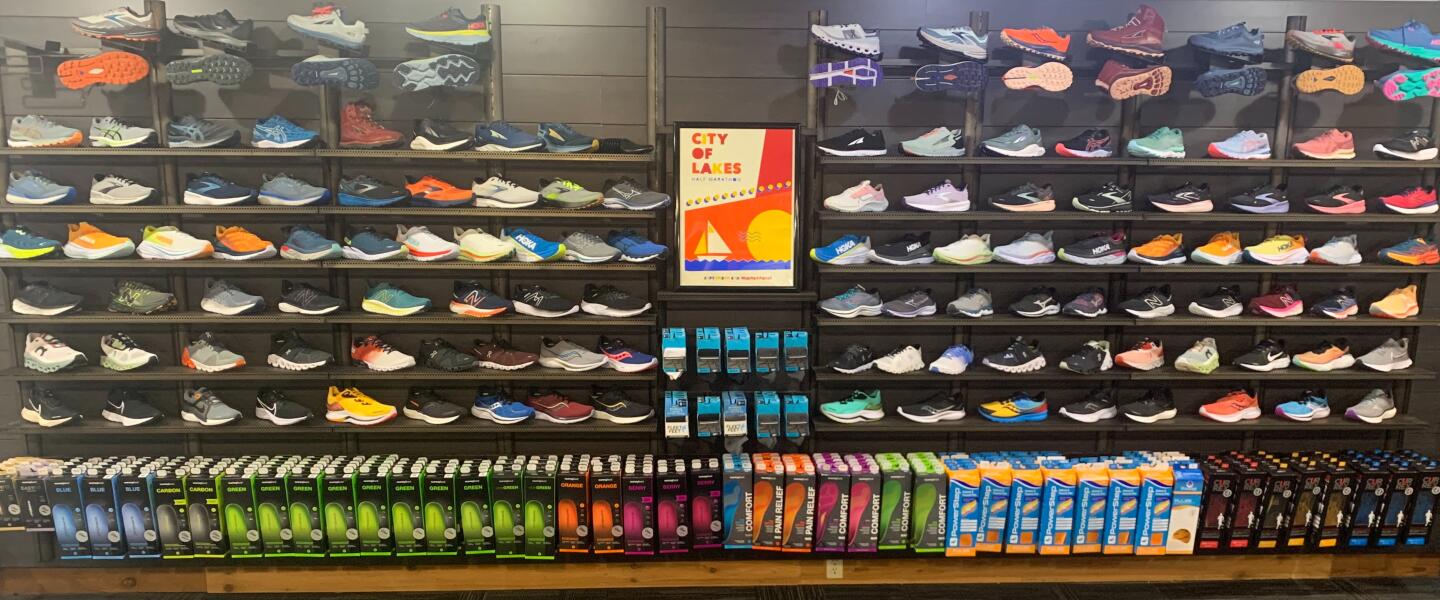

Featured
How To Buy Running Shoes In San Francisco, CA
Modified: May 22, 2024
Discover the best running shoe store in San Francisco, CA. Find featured running shoes for all types of runners at unbeatable prices. Shop now!
Introduction
Choosing the right pair of running shoes is essential for both seasoned athletes and beginners. Not only do they provide protection and support for your feet, but they can also greatly enhance your running performance. If you’re residing in or around San Francisco, CA, finding the perfect pair of running shoes becomes even more crucial, as the city boasts a diverse terrain and a vibrant running culture.
With a plethora of running shoe stores, both physical and online, it can sometimes be overwhelming to navigate the market. Each store offers a wide variety of brands, styles, and features, making it challenging to pinpoint the best option for you. Fortunately, by following a few key steps, you can simplify the process and ensure that you end up with the perfect pair of running shoes.
In this article, we will guide you through the essential factors to consider when buying running shoes in San Francisco, CA. From understanding your running style and foot type to trying and testing different brands, we’ll provide you with the information you need to make an informed decision. By following these steps, you’ll be well on your way to finding the ideal pair of running shoes that will keep you comfortable and performing at your best.
So, let’s dive in and explore the world of running shoes in San Francisco, CA. Whether you’re a seasoned runner or just starting your fitness journey, this guide will equip you with the knowledge and tools necessary to make the right choice.
Factors to Consider Before Buying Running Shoes
Before you rush into purchasing a pair of running shoes, it’s important to consider several key factors to ensure that you make the right choice. These factors will not only contribute to your comfort while running but also help prevent injuries and provide optimal support. Here are some important aspects to keep in mind:
- Running Style: Assess your running style and gait pattern. Do you have a neutral, supinated, or overpronated foot strike? Understanding your running mechanics will help you find the appropriate type of shoe with the right amount of stability or cushioning to support your feet and prevent any imbalances.
- Foot Type: Determine your foot type, such as high arches, flat feet, or normal arches. This information will guide you towards the proper shoe category, whether it’s neutral, stability, or motion control, to maintain proper alignment and reduce any potential discomfort.
- Comfort: The comfort of the shoe is crucial for an enjoyable and pain-free running experience. Make sure the shoe has ample cushioning, a supportive midsole, and a snug but not tight fit. Additionally, consider any specific foot conditions you may have, such as bunions or plantar fasciitis, and choose a shoe that accommodates those needs.
- Terrain: Take into account the type of terrain you typically run on in San Francisco, CA. Whether it’s city streets, trails, or a combination, the shoe’s outsole should provide adequate traction and durability to handle the specific surfaces you’ll encounter.
- Weight: Consider the weight of the shoe, as it can affect your running performance. Lighter shoes are often preferred for faster-paced runs or races, while slightly heavier shoes may provide more cushioning and support for longer distance runs.
By considering these factors, you’ll be better equipped to choose a running shoe that suits your specific needs and preferences. Remember, it’s not just about finding the trendiest or most popular shoe but rather finding the one that supports your unique running mechanics and provides optimal comfort.
Researching Running Shoe Stores in San Francisco, CA
Once you have a clear understanding of the factors to consider when buying running shoes, the next step is to research the various running shoe stores in San Francisco, CA. This will help you identify the stores that offer a wide selection of brands, knowledgeable staff, and a positive shopping experience. Here are some ways to conduct your research:
- Online Reviews: Check online review platforms such as Yelp or Google reviews to see what customers have to say about the running shoe stores in San Francisco. Look for stores with consistently positive reviews, as this indicates excellent customer service and a wide range of products.
- Ask for Recommendations: Reach out to fellow runners in San Francisco or join local running groups to gather recommendations on the best running shoe stores in the area. Other runners can provide firsthand experiences and insights into the stores’ selection, expertise of staff, and overall atmosphere.
- Visit Store Websites: Visit the websites of the running shoe stores you’re interested in to get an idea of their inventory, store location, and any special promotions or events they may have. Look for stores that carry a variety of brands and styles to increase your chances of finding the perfect shoe.
- Check for Specialty Stores: Consider visiting specialty running stores that cater specifically to runners. These stores often have dedicated staff who understand the unique needs of runners and can provide expert advice on shoe selection and fitting.
- Consider the Location: Evaluate the proximity of the running shoe stores to your home or favorite running spots. Convenient location can make it easier for you to visit the store for fittings, returns, or any follow-up assistance.
By conducting thorough research, you’ll be able to narrow down your options and choose the running shoe stores in San Francisco that best suit your needs. Remember to prioritize stores with positive reviews, knowledgeable staff, and a wide range of products to ensure a successful and satisfying shopping experience.
Understanding Your Running Style and Foot Type
One of the most important considerations when buying running shoes is understanding your running style and foot type. This knowledge will help you choose a shoe that provides the necessary support and comfort for your unique needs. Here are some key points to consider:
Running Style:
Assess your running style and gait pattern. The way you run can greatly impact the type of shoe that is suitable for you. There are three main types of foot strikes: neutral, supinated (underpronated), and overpronated:
- Neutral: If you have a neutral foot strike, the outside of your heel strikes the ground first, and your foot then rolls slightly inward to absorb the impact. Look for neutral shoes that provide moderate cushioning and support.
- Supinated (Underpronated): Supination occurs when your foot does not roll inward enough during the foot strike. Look for shoes with extra cushioning to help compensate for the lack of natural shock absorption.
- Overpronated: Overpronation is when the foot rolls excessively inward during the foot strike. Look for stability or motion control shoes that provide additional support and stability to prevent overpronation.
Foot Type:
Determining your foot type is another crucial factor in finding the right running shoe. The three main types of foot arches are high arches, flat feet, and normal arches:
- High Arches: If you have high arches, your feet may not absorb shock efficiently. Look for shoes with ample cushioning to provide extra support and shock absorption.
- Flat Feet: Flat feet have low arches or no arches, which can lead to overpronation. Look for shoes with good arch support and motion control to help stabilize your foot.
- Normal Arches: If you have normal arches, you are considered a neutral runner. Look for shoes that offer a well-balanced combination of cushioning and support.
Understanding your running style and foot type will help you narrow down the options when selecting running shoes. It’s important to note that everyone’s feet and running mechanics are unique, so don’t hesitate to seek advice from professionals in running specialty stores who can perform gait analysis and provide personalized recommendations.
Determining the Right Size and Fit
When it comes to buying running shoes, finding the right size and fit is crucial for optimal comfort and performance. Ill-fitting shoes can lead to discomfort, blisters, and even injuries, so taking the time to determine the correct size and fit is essential. Here are some guidelines to help you find the perfect fit:
- Measure Your Feet: Start by measuring your feet using a brannock device or a measuring tape. Measure both feet, as one foot may be slightly larger than the other. Use the measurements as a reference when trying on different shoe sizes.
- Try Shoes in the Afternoon: Feet tend to swell throughout the day, so it’s best to try on shoes in the afternoon when your feet are at their largest. This ensures that you don’t end up with shoes that feel too tight when your feet swell during a run.
- Allow Some Wiggle Room: Ensure that there is around 1/2 inch of space between your longest toe and the front of the shoe. This allows for proper movement and prevents your toes from hitting the front of the shoe when running downhill or on uneven surfaces.
- Consider Orthotics or Inserts: If you use custom orthotics or inserts, bring them with you when trying on shoes. This will help you determine if the shoe can accommodate and support your specific foot needs.
- Walk and Run in the Shoes: Once you’ve found a potential pair, take them for a test walk or jog around the store. Pay attention to how they feel, ensuring that there are no areas of discomfort or rubbing. Your foot should feel secure and stable within the shoe.
- Check the Width: Consider the width of the shoe as well. Some brands offer shoes in different width options to ensure a proper fit. If you have wider or narrower feet, look for shoes that cater to your specific width requirements.
Remember that sizing can vary between brands and even between different models of the same brand. Don’t get too fixated on the number or size. Focus on how the shoe feels on your feet and trust your instincts. If a shoe feels uncomfortable or doesn’t provide the necessary support, try a different size or model.
By taking the time to find the right size and fit, you’ll significantly increase your chances of enjoying a comfortable and injury-free run in your new pair of running shoes.
Trying and Testing Different Running Shoe Brands
When shopping for running shoes in San Francisco, CA, it’s important to explore and compare different brands to find the one that works best for you. Each brand offers a unique combination of features, technologies, and styles, and what works for one person may not work for another. Here are some tips for trying and testing different running shoe brands:
- Visit Specialty Running Stores: Specialty running stores often carry a wide range of running shoe brands. These stores have knowledgeable staff who can guide you through the various options and help you find brands that suit your running style and foot type.
- Try on Multiple Brands and Models: Don’t limit yourself to just one brand. Try on shoes from multiple brands to compare their fit, cushioning, and overall feel. This will give you a better understanding of the range of options available and help you make an informed decision.
- Consider Your Previous Experiences: If you have had success with a particular brand or model in the past, it’s worth considering trying shoes from that brand again. However, don’t be afraid to venture out and explore different brands to see if there are any hidden gems that might suit you even better.
- Take Test Runs: If possible, ask if the running shoe store allows test runs or offers a return policy that allows you to try the shoes outside on a short run. This will give you a better sense of how the shoes perform and feel during a real run.
- Consider Brand Reputation: Research the reputation of different running shoe brands. Look for reviews and feedback from other runners to gain insights into the performance, durability, and reliability of the shoes. Remember that brand reputation can be subjective, so prioritize your own comfort and preferences above all.
- Ask for Expert Advice: Don’t hesitate to seek advice from the staff at running shoe stores. They can provide valuable information about different brands and models based on your running style and foot type. Their expertise can help narrow down your options and guide you towards the best choices.
Remember, the goal is to find a running shoe brand that not only fits well but also supports and enhances your running experience. Take your time to explore and experiment with different brands, and trust your own comfort and instincts when making your final decision.
Comparing Prices and Evaluating the Shoe’s Durability
When shopping for running shoes in San Francisco, CA, it’s important to consider the price and durability of the shoes. While you want to find a pair that fits your budget, you also want to ensure that they will last and provide value for your investment. Here are some factors to consider when comparing prices and evaluating the durability of running shoes:
- Set a Budget: Determine your budget for running shoes before you start comparing prices. This will help narrow down your options and prevent overspending. Keep in mind that higher-priced shoes often come with advanced features and technologies, but that doesn’t necessarily mean they are the best choice for you.
- Compare Prices: Visit different running shoe stores or check online retailers to compare prices for the specific model and brand you are interested in. However, be wary of heavily discounted shoes, as they may be older models or have limited availability in certain sizes.
- Evaluate Durability: Consider the construction and materials used in the shoe. Look for durable outsoles made of rubber or carbon rubber, as they tend to offer better traction and long-lasting wear. Additionally, examine the stitching and overall quality of the shoe to ensure it can withstand the demands of your running routine.
- Read Reviews: Research online reviews and feedback from other runners to gauge the durability of the shoes you are considering. Look for comments about how well the shoes hold up over time and if there are any common complaints about the shoe’s durability.
- Consider Longevity: Take into account your running frequency and the duration of your runs. If you are an avid runner, investing in a more durable and long-lasting shoe may be worth the extra cost, as it will provide value and support for a longer period.
- Check for Warranty: Some running shoe brands offer warranties that cover manufacturing defects or premature wear. Checking for warranty coverage can give you peace of mind and added protection for your investment.
Remember that finding the right balance between price and durability is key. Focus on choosing a shoe that fits within your budget while still ensuring it will withstand the demands of your running routine. Ultimately, opting for a slightly higher-priced shoe with better durability may be a wise investment in the long run.
Seeking Expert Advice from Running Shoe Specialists
When it comes to buying running shoes, seeking advice from running shoe specialists can greatly enhance your shopping experience and help you make an informed decision. Running shoe specialists have in-depth knowledge about different brands, models, and technologies, and they can provide personalized recommendations based on your specific needs. Here are some reasons why seeking expert advice is beneficial:
- Product Knowledge: Running shoe specialists have extensive knowledge of the various running shoe brands, models, and features available in the market. They are up-to-date with the latest advancements in running shoe technology and can help you navigate through the options to find the perfect shoe for your needs.
- Gait Analysis: Many specialty running shoe stores offer gait analysis, which involves analyzing your running style and foot strike. By observing your gait, specialists can identify any biomechanical issues or imbalances, and recommend shoes that provide the appropriate support and stability.
- Precision Fitting: Running shoe specialists are trained in fitting shoes correctly. They will measure your feet, assess your arches, and take other factors into consideration to ensure you find the right size and fit. They can also provide insights into different shoe models and widths that suit your foot type and preferences.
- Foot Condition Management: If you have specific foot conditions or injuries, running shoe specialists can offer advice on shoes that can accommodate your needs. They may recommend shoes with extra cushioning, stability, or other features to provide relief and support during your runs.
- Trial Runs and Returns: Some specialty stores allow customers to test shoes on a treadmill or offer favorable return policies. This allows you to try the shoes in real running conditions and return them if they don’t feel comfortable. Specialists can guide you through this process to ensure you find the best-fitting shoe for your needs.
- Access to Expertise: Utilizing the expertise of running shoe specialists can save you time and effort. Instead of spending hours researching and experimenting on your own, you can rely on their knowledge and experience to guide you towards the most suitable options.
Running shoe specialists are passionate about running and helping runners find the right shoes. Take advantage of their expertise to make your running shoe shopping experience more enjoyable and successful. Their insights and guidance can greatly enhance your performance, comfort, and overall satisfaction with your new pair of running shoes.
Finalizing Your Purchase and Enjoying Your New Running Shoes
After considering all the important factors and seeking expert advice, it’s time to finalize your purchase and start enjoying your new running shoes. Here are some steps to follow:
- Make the Decision: Based on your research, expert advice, and personal preferences, narrow down your options and choose the running shoe that best meets your needs. Trust your instincts and go with the shoe that feels the most comfortable and supportive for your feet.
- Try Them On Again: Before making the purchase, try the shoes on one last time. Walk around the store and make sure they still feel comfortable. Pay attention to any areas of discomfort or irritation and make sure the fit is just right.
- Check for Special Deals or Discounts: Before making the final payment, inquire about any ongoing promotions, discounts, or loyalty programs that could help you save money on your purchase. Take advantage of these offers if available.
- Ask about Return Policies: Inquire about the store’s return policy and any conditions or time frames associated with returning or exchanging the shoes. This will ensure that you have a safety net in case the shoes don’t work out as expected.
- Enjoy Your Runs: Once you have your new running shoes, it’s time to hit the pavement and enjoy your runs in San Francisco, CA. Take some time to break them in gradually to give your feet time to adjust to the new shoes and to gauge their performance during your runs.
- Maintain and Care for Your Shoes: Extend the lifespan of your running shoes by properly maintaining and caring for them. Clean them regularly, allow them to fully dry after each use, and rotate them with other pairs to minimize wear and tear. This will ensure that you get the most out of your investment.
- Monitor for Wear and Tear: Keep an eye on the condition of your running shoes. As they accumulate miles, check for signs of wear and tear such as excessive tread wear or cushioning breakdown. Knowing when to replace your shoes will help you maintain optimal support and comfort during your runs.
Congratulations on finalizing your purchase and acquiring your new running shoes! Remember, finding the right pair of running shoes is a crucial step towards a comfortable and enjoyable running experience. Take care of your shoes, embrace your workouts, and continue to prioritize your health and fitness by hitting the streets of San Francisco in your new running shoes.
Conclusion
Choosing the perfect pair of running shoes in San Francisco, CA, involves careful consideration of several factors. By understanding your running style and foot type, researching running shoe stores, determining the right size and fit, trying and testing different brands, comparing prices and evaluating durability, seeking expert advice, and finalizing your purchase, you can ensure a successful running shoe shopping experience.
Remember that finding the right running shoes goes beyond just style and trends. It’s about selecting shoes that provide the necessary support, cushioning, and comfort for your unique needs. Pay attention to your running mechanics, arches, and any specific foot conditions you may have. Seek expert advice from running shoe specialists who can guide you towards the right selection.
Once you have found the perfect pair, embrace your new running shoes and enjoy your runs in San Francisco, CA’s scenic routes. Take care of your shoes, monitor for signs of wear and tear, and replace them when necessary to maintain optimal performance and injury prevention.
Remember, running shoes are not only a functional item but also an investment in your health and well-being. Investing the time and effort into finding the right pair will pay off in the long run, ensuring a comfortable and enjoyable running experience on the streets of San Francisco, CA.

